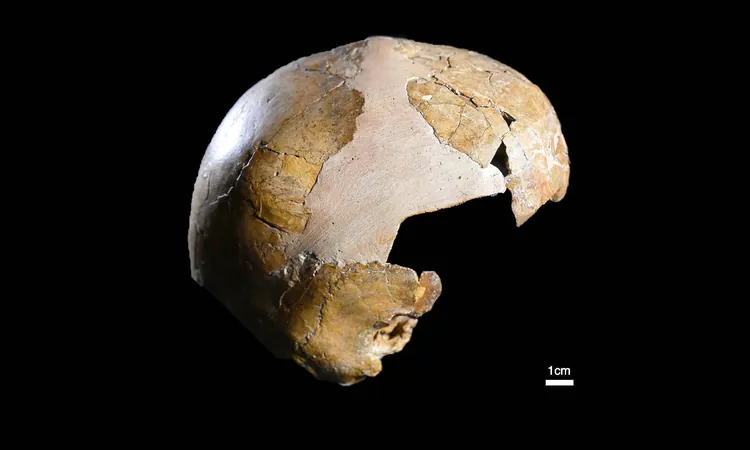
Ancient Skeleton Sparks Controversy: A Hybrid Child of Humans and Neanderthals?
2025-08-30
Author: Wei
A Groundbreaking Discovery from Skhul Cave
A child's skeleton, unearthed nearly a century ago in Skhul Cave, Israel, has taken on thrilling new significance after a modern re-analysis. Scientists are now proposing that this ancient remains, dating back approximately 140,000 years, demonstrates a striking blend of Homo sapiens and Neanderthal traits. This could suggest early interactions between these two ancient groups in the Levant region.
Uncovering the Features of the Skhul Child
Professor Israel Hershkovitz from Tel Aviv University and Anne Dambricourt-Malassé from France’s CNRS led an innovative international team that used cutting-edge imaging techniques to analyze the Skhul I specimen. Their findings reveal a braincase that mirrors modern humans, yet the lower jaw presents characteristics more akin to Neanderthals, including an absence of the usual bony chin, a significant anatomical distinction.
The Genetic Puzzle: More Than Just Bones?
While the intriguing findings triggered excitement within the scientific community, experts argue that simply having a blend of physical features doesn’t conclusively prove hybrid ancestry. Genetic research over the last decade already indicates that many non-African humans carry traces of Neanderthal DNA, primarily arising from interactions that are believed to have occurred around 50,000 to 60,000 years ago.
What This Means for Early Human Burials
The implications of this discovery are profound. Skhul and nearby Qafzeh sites are renowned for their early signs of intentional burials—suggesting complex social practices among Pleistocene peoples. If the Skhul child indeed results from a mix of species, this could reshape our understanding of early human identities and behaviors in this region.
Revisiting Ancient Fossils with Advanced Technology
The research team deployed advanced micro-CT imaging to create intricate 3D models of the skull and jaw, enabling them to perform a virtual dissection of preserved materials and avoid previous measurement biases. They meticulously compared anatomical features to categorized Neanderthal and modern human samples, emphasizing that inner ear structures often maintain their integrity through time, providing crucial genealogical insights.
Skepticism and the Need for Genetic Evidence
However, skepticism remains. Not all paleoanthropologists are convinced that the Skhul remains definitively indicate hybrid ancestry. Some, like Chris Stringer, argue that the skeletal material still aligns mostly with Homo sapiens, though it certainly hints at gene flow. Given that significant gene transfer between the species is believed to have occurred thousands of years later, the scientific community largely agrees that proving hybrid ancestry demands ancient DNA analysis—a challenging task in warm environments.
Looking Ahead: Future Research Directions
The ongoing conversation surrounding the Skhul child could shift dramatically with new genomic data and comparative research on other Levantine fossils. The unique findings about the inner ear and lower jaw pave the way for a closer evaluation of other Mount Carmel fossils using similar analytical techniques.
As we continue to decode the ancient identity of our predecessors, it becomes clear that the full story of human evolution—interactions, migrations, and hybridizations—remains a complex and riveting puzzle for scientists worldwide.


 Brasil (PT)
Brasil (PT)
 Canada (EN)
Canada (EN)
 Chile (ES)
Chile (ES)
 Česko (CS)
Česko (CS)
 대한민국 (KO)
대한민국 (KO)
 España (ES)
España (ES)
 France (FR)
France (FR)
 Hong Kong (EN)
Hong Kong (EN)
 Italia (IT)
Italia (IT)
 日本 (JA)
日本 (JA)
 Magyarország (HU)
Magyarország (HU)
 Norge (NO)
Norge (NO)
 Polska (PL)
Polska (PL)
 Schweiz (DE)
Schweiz (DE)
 Singapore (EN)
Singapore (EN)
 Sverige (SV)
Sverige (SV)
 Suomi (FI)
Suomi (FI)
 Türkiye (TR)
Türkiye (TR)
 الإمارات العربية المتحدة (AR)
الإمارات العربية المتحدة (AR)